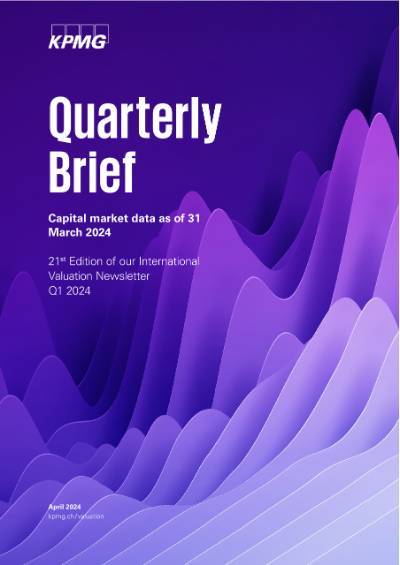As technological disruption, geopolitical uncertainties and sector convergence result in enormous volatilities and are crucial topics for the global economy, it should come as no surprise that now, more than ever, valuation matters.
Whether it’s creating, unlocking, protecting or understanding value, our market-leading and independent valuation and financial modelling team is here to help. We take a holistic view by spending time to understand the dynamics and value drivers of your business and apply state-of-the-art technology for data analytics, simulations and visualization in order to address the most complex modelling and valuation issues.
Our services
We provide the following services throughout the deal cycle and beyond:
- Investment and transactional board advice: Independent valuation advice to help decision makers analyse investment or divestment opportunities as well as guidance on joint ventures and alliances.
- Fairness opinion: Independent opinion on the fairness of the price and terms of a transaction (a) in public transactions according to the requirements of the Swiss Takeover Board or (b) in private transactions.
- Accounting, tax and regulatory valuations: Determination of the fair (market) value of equity shares, intangible and tangible assets or complex financial instruments under accounting standards (e.g. IFRS or US GAAP), tax standards from various countries or other regulatory standards such as IPEV, IVS, OECD, GIPS, etc.
- Financing for start-ups or LBOs: Independent analysis and valuation around raising equity or debt financing, including modelling robust financial business plans based on commercial due diligence.
- Restructuring: Valuation advice and strategic options in connection with independent business reviews and independent valuation opinions for the benefit of lenders, companies, and administrators.
- Dispute resolution valuations: Support with litigation and arbitration cases as party-appointed expert, jointly engaged arbitrator or court-appointed expert e.g. for damage quantifications in relation with contract breaches or IP infringements, disputes between shareholder or JV partners, or in inheritance disputes.
- Funds: Advice for fund managers and financial sponsors throughout the lifecycle of an investment or a fund.
- Value-based management: Assistance in setting up value-based management systems or value-based portfolio control systems.
- Economic analysis: Independent advice based on advanced data analytics, benchmarking, modelling and valuation concepts on topics such as capital allocation strategies, synergy assessment or strategic option assessment.
Discover more
Quarterly Brief: International Valuation Newsletter
Our Quarterly Brief is a publication that not only provides well-founded market data but also delves into key current topics that influence valuation analysis. In recent years, our publication has explored a range of important issues, from the impact of COVID-19 to ESG considerations, renewable energy, and geopolitical influences on valuations.
The Quarterly Brief will be issued regularly, consisting of the market data section, keeping the readers up to date on the latest developments in the relevant financial markets. Additionally, we will feature informative articles covering hot topics that impact valuations on an intermittent basis.
The key capital market data consists of:
- index performance
- sector multiples
- risk-free rates
- country risk premiums
- growth rates for selected markets
Previous issues
- Quarterly Brief 01/2024: Capital market data
- Quarterly Brief 10/2023: Capital market data
- Quarterly Brief 10/2022: Geopolitical tensions
- Quarterly Brief 01/2022: Renewable energy valuation
- Quarterly Brief 10/2021: Goodwill impairment
- Quarterly Brief 04/2021: Early-stage companies
- Quarterly Brief 01/2021: ESG
- Quarterly Brief 10/2020: Healthcare





